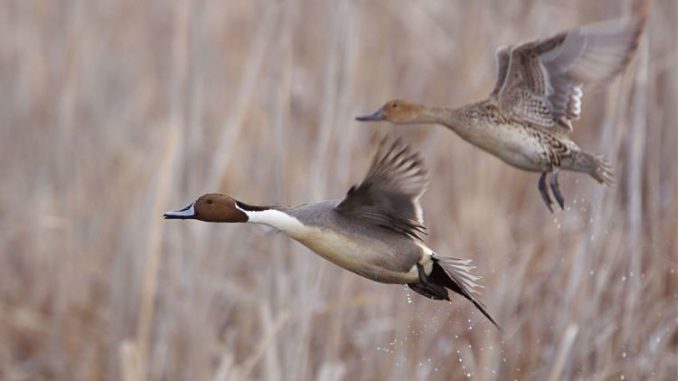
Teal season will open on a Friday for first time in 16 years
Outdoorsmen might be focused right now on spawning specks, big redfish, lunker bass and sac-a-lait slabs, but when those first cool fronts start teasing us after the dog days of summer, teal will once again take center stage.
And this year, for the first time since 2000, hunters will get their first crack at the rockets on a Friday — Sept. 15.
“The feedback I’ve received on this has been overwhelmingly positive,” said Larry Reynolds, waterfowl study leader for the Louisiana Department of Wildlife and Fisheries. “If you open on a Friday and close on a Sunday with a 16-day season, you lose a weekend hunting day, and there are a lot of hunters that have to hunt on weekends. So that was the tradeoff.”
The season typically would have opened on Saturday, Sept. 9 and closed on Sunday, Sept. 24, which would have allowed for six days of weekend hunting.
But with a Friday opening and a Saturday closing, the season begins six days later to potentially take advantage of any late-month cool fronts, and ends on the last day possible in the framework — Sept. 30 — which results in one less day of weekend hunting.
But Reynolds stressed that a later-than-usual start for teal season would not be a yearly occurrence. In 2020, for example, opening on Sept. 15 and closing on Sept. 30 would mean only four weekend hunting days in the 16-day season.
“As long as I’m in charge of making the proposal, we’re not going to sacrifice two weekend hunting days to get a later season,” he said. “It’s just not worth it to lose two weekend days.”
In other news, he said the Louisiana Wildlife and Fisheries Commission approved waterfowl season dates for 2017-18 at its April meeting.
The coastal and west zones open on Nov. 11 with the first split ending on Dec. 3. The second split runs from Dec. 16 to Jan. 21 in both zones.
The east zone opens Nov. 18, with the first split ending Dec. 3. The east zone second split runs Dec. 16 through Jan. 28.
Youth hunts in the coastal zone are Nov. 4 and 5; in the west they are slated for Nov. 4 and Jan. 27. In the east zone, youth hunts will be conducted on Nov. 11 and Feb. 3.
Daily bag limits remain unchanged for 2017-18— except for pintails, which drops from two birds down to one.
“The pintail population has been declining for three years. Last year in May, when we did the breeding survey, that data showed the pintail population had dropped below what is required to have a two-bird bag limit,” Reynolds said. “So if we had been setting the duck hunting regulations like we did for 60 years, we would have had a one-bird pintail bag limit last year.
“But because we’re under this new timing and we’d already set the seasons in April, we maintained the two-pintail bag last year and will go to one this year.”
While other duck populations are doing well, changes on the prairie have begun to affect pintails’ nesting success, he explained.
“Pintails have been confounding us for 25 years,” Reynolds said. “They nest in short-grass prairie, which is one of the most converted and threatened habitats on the landscape. And all of this conversion has affected pintails first.”
So even though a species like mallards might be thriving, that doesn’t necessarily mean nesting pintails are having the same kind of success.
“It’s just the difference between the flexibility of the species and the changing habitat conditions, and their flexibility to adapt to them,” he said.
One area of the state that could be on the cusp of experiencing major habitat changes is the mouth of the Mississippi River out of Venice, where the signature roseau cane there is being attacked by an exotic insect.
The rate at which the roseau cane mealy bug is destroying the dominant vegetation of the Mississippi River Delta is alarming biologists. And although it doesn’t directly provide great waterfowl habitat, Reynolds said its main role is even more vital to the region.
“At the mouth of the river, it’s really the only thing there holding the marsh together, breaking the wave energy and slowing the processes of coastal erosion,” he said. “Right now there are a lot of people extremely frightened — people that have spent a lot of their lives down at the mouth of the river that are worried that if this roseau cane dies — and we get a hurricane or a large storm surge event — it just gets washed away.”
The LSU AgCenter has asked hunters not to transport any infested roseau cane from Plaquemines Parish into other parts of the state with the idea of killing the plant elsewhere, where it is often seen as a nuisance. Scientists don’t yet know if the mealy bugs could spread to other beneficial crops, like sugarcane, rice, sorghum or other wetland grasses.
“Until we know more about this thing, we need to keep it where it is,” Reynolds said.
Some Google Earth images seem to indicate a potential cyclical die-off of roseau cane in the region, but Reynolds said it’s still too early to tell what impact the die-off might have on waterfowl later this year.
“If the roseau cane dies and is replaced by a broad flat of delta duck-potato, that’s great for ducks,” he said. “But if it dies off and a big storm surge event comes through and there’s no marsh left at all, then that’s really bad for ducks.
“It’s just a big ‘we don’t know’ at this point.”




